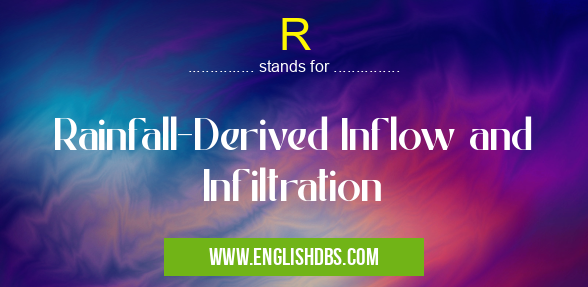What does R mean in HYDROLOGY
Rainfall-Derived Inflow and Infiltration (R), is a critical factor in the design and operation of wastewater collection and treatment systems. R refers to the amount of stormwater and groundwater that enters a wastewater system through various pathways, including:

R meaning in Hydrology in Academic & Science
R mostly used in an acronym Hydrology in Category Academic & Science that means Rainfall-Derived Inflow and Infiltration
Shorthand: R,
Full Form: Rainfall-Derived Inflow and Infiltration
For more information of "Rainfall-Derived Inflow and Infiltration", see the section below.
- Inflow: Stormwater that enters the system through manholes, catch basins, or other openings in the collection network.
- Infiltration: Groundwater that seeps into the system through cracks or joints in the pipes or manholes.
R is a significant concern for wastewater utilities because
- Increased Flows: R can significantly increase the flow of wastewater entering the treatment plant, potentially overwhelming its capacity and leading to untreated or partially treated wastewater being discharged into the environment.
- System Overloading: Excessive R can cause sewer backups, flooding, and other infrastructure damage.
- Treatment Costs: Treating large volumes of R can increase operating costs and divert resources away from other important tasks.
- Environmental Impacts: Untreated or partially treated wastewater can pollute surface water, groundwater, and soil, posing risks to human health and the environment.
Essential Questions and Answers on Rainfall-Derived Inflow and Infiltration in "SCIENCE»HYDROLOGY"
What is Rainfall-Derived Inflow and Infiltration (RDI)?
RDI refers to the process of water entering a sewer system from rainfall events. This water can infiltrate through cracks and holes in pipes, or from direct runoff into manholes and catch basins. It can contribute to sewer overflows and backups during heavy rainfall, potentially leading to environmental and public health issues.
How does RDI differ from inflow and infiltration (I/I)?
RDI specifically refers to water entering the sewer system due to rainfall, whereas I/I encompasses all sources of extraneous water entering the system, including groundwater infiltration, illicit connections, and cross-connections. RDI is a subset of I/I.
What are the impacts of RDI?
RDI can lead to:
- Sewer overflows, resulting in raw sewage discharge into waterways
- Increased risk of basement backups
- Pollution of surface waters
- Damage to infrastructure
- Public health hazards due to waterborne pathogens
How can RDI be addressed?
Addressing RDI involves a combination of measures, including:
- Pipe rehabilitation or replacement to seal leaks and cracks
- Installation of flow control devices to limit inflow during heavy rainfall
- Green infrastructure solutions, such as rain gardens and permeable pavements, to reduce runoff
- Inspection and maintenance programs to identify and repair defects
- Public education to prevent illicit connections
What are the benefits of reducing RDI?
Reducing RDI can:
- Improve water quality and protect aquatic ecosystems
- Reduce the risk of sewer overflows and backups
- Lower infrastructure maintenance and repair costs
- Protect public health by minimizing waterborne disease outbreaks
Final Words: Understanding and managing R is essential for wastewater utilities to ensure reliable and efficient wastewater collection and treatment. By implementing measures to control R, utilities can mitigate its negative impacts, protect public health, and preserve environmental resources.
R also stands for: |
|
| All stands for R |
